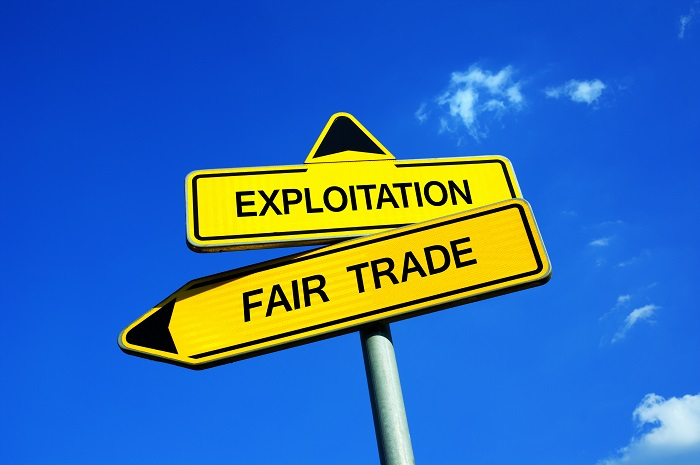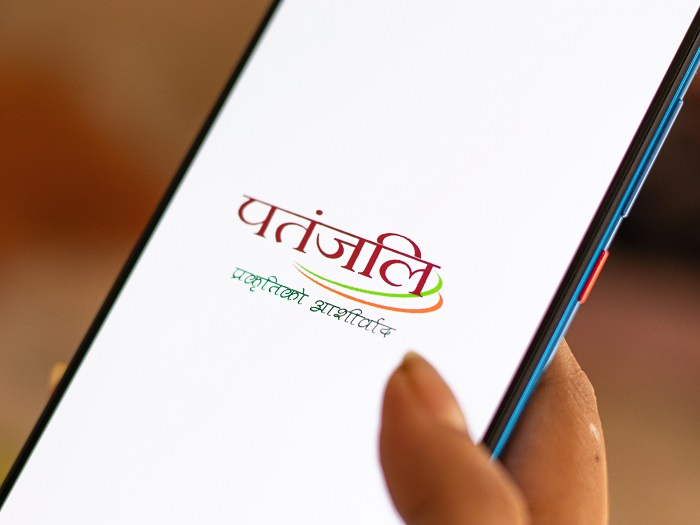
 Data Structure
Data Structure Networking
Networking RDBMS
RDBMS Operating System
Operating System Java
Java MS Excel
MS Excel iOS
iOS HTML
HTML CSS
CSS Android
Android Python
Python C Programming
C Programming C++
C++ C#
C# MongoDB
MongoDB MySQL
MySQL Javascript
Javascript PHP
PHP
- Selected Reading
- UPSC IAS Exams Notes
- Developer's Best Practices
- Questions and Answers
- Effective Resume Writing
- HR Interview Questions
- Computer Glossary
- Who is Who
How are Consumers Exploited by Businesses?
Businesses operate to maximize their profit in this fast-paced, dynamic world. With every drop of the hat, we see new competitors rising up with similar and sometimes identical products or services to offer consumers. It is recommended that producers or marketers take a different path or point of differentiation in order to make their offerings more appealing to consumers. It could be in terms of
Product or service offering
The price at which the product is offered
The way the product is being offered in terms of packaging or marketing strategies
Where the product is being offered
To whom the product is offered and others

But sometimes companies take the wrong approach. In this article, we will be diving deep into how consumers are exploited by businesses and why they should not take this route.
Consumer Exploitation by Businesses
We see many occurrences in which the consumers are being offered goods of below-standard quality, are being charged more for a product, the product or service is not delivered to consumers, or businesses are making tall claims to the consumer regarding a product or service. All these cases are nothing but the exploitation of consumers by businesses to sell their products and thus maximize their profits. Consumers are rational human beings, but deception is something that they cannot control.
Ways in Which Consumers Are Exploited in the Market
Selling of defective or expired goods - Not all consumers in all situations are extremely vigilant regarding the quality of goods that they purchase. Companies often sell defective or expired items to consumers. Clothes that you purchased or stuffed toys might be torn, or the 100 grams of butter that you purchased might be expired and hence have a foul taste and smell. They use the strategy of placing expired or near-expired products near the billing counter and offering steep discounts.
Adulterated offerings made to the consumers - In this situation, what the sellers do is mix the product with other adulterations to increase the quantity or reduce the cost of the good. This helps them earn more profits or volume sales than the companies that are selling high-quality goods to consumers. Examples of this scenario could be the adulteration or addition of water to milk by our regular milkman or when pharmacies offer you medicines at a discount that are adulterated. Consumers are duped because they lack knowledge of pharmacy or are unable to see the company's manufacturing facility.
When the goods offered are of substandard and below-average quality - there are scenarios where the company while selling the product, claims it to be of superior quality, but what you take home is at a level below. This is commonly seen in jewelry companies. Sellers might sell below-quality gold, diamonds, or stones to consumers, and the consumer, being a noob in this case, gets cheated.

False advertisements - Here, the companies make tall claims regarding the product quality or the benefits that the product can offer to the consumer to sell their product. The company does not care about its goodwill or the fact that it will be repelling so many consumers by playing with their trust. For example, Patanjali, an Indian ayurvedic brand at the time of the pandemic, started advertising one of its products as something that can cure coronavirus and has been approved by the government of India. The company did that on one of the news channels. Patanjali was able to attract thousands of consumers to its website and sell its product to them. After some time, the government issued a notice that its claims about Patanjali were not true, and Patanjali tried to avoid the situation by saying that it has never claimed something like this. The company was penalized for its actions.
When the seller uses false weighing scales or machines - this is a scenario when the seller does not give the consumer the correct quantity of goods promised. They use scandalous weights or weighing machines to earn more profit. These are generally done by the local grocery and ration shop owner. Where they promise to deliver 1000 grams of rice for Rs 30, what they actually give you is 950 or 900 grams of rice for Rs 30. Camouflaged marketing can also be included here. Camouflaged marketing occurs when the price of raw materials used in the manufacturing of products increases. This increase in the price of raw materials causes the overall cost price of the product to increase, and hence the selling price of the product to increase. Now instead of increasing the price of the product, what companies do is decrease the quantity being offered. This is something that is not conveyed to the consumer. Now, for example, earlier the company was offering 100 grams of potato chips for Rs 10, but now they are selling 90 grams of potato chips at Rs 10. The consumer assumes that the competitor has increased the price and not this brand, so they keep purchasing it. Sometimes companies are also able to attract competitors' consumers.
On sales flashcards or hoardings by companies - We often see that brands advertise as "50% off" or "on sale," but when we enter the shop, only a very limited number of items are on sale and everything else is in the new arrival sections. There could also be cases where brands advertise a particular product to be on sale, but when you enter the shop, you witness that the product is out of stock and the salesperson is driving you to buy products of higher quality and cost. This is also a method through which businesses exploit consumers.
Negative Impact on the Company After Consumer Exploitation

Fines and penalties imposed by the consumer rights department - When a consumer complains about any exploitation that the brand has done to them and they submit proof, the consumer forum imposes a fine on the company. Generally, these fines are heavy, and they are even asked to write letters of public apology.
Legal action against the owner - The penalty that a business can receive is not only limited to fines and penalties but can also lead to situations of imprisonment or the shutting down of businesses. It totally depends on the intensity of the crime being committed.
Goodwill is hampered - Whenever a company does something to exploit its consumers, the consumers and the community withdraw their trust in the company. There is no goodwill or good name left for the company, and a lot of negative publicity.
Consumers boycott the brand altogether - If one branch of the umbrella brand does something wrong, we see the lingering impact on all the other brands that the company holds. Consumers boycott the brand and all its products.
Long-term survival is in shambles - Companies can exploit consumers once and get huge profits and sales, but the sour experience that they create through their exploitation will lead to the consumer never going back to the brand and spreading negative word of mouth about the company. The company will not be able to survive in the long term because of a zero or negligible customer base.
It is time that companies understand that exploiting their consumers is not a point of differentiation that they can create for the brand's survival. Consumer exploitation will only create a sour experience among consumers. With everything happening online, it is very easy for consumers to complain about a brand and also spread their stories to the community. Good customer relationships can only ensure long-term business and long-term survival for the company.

